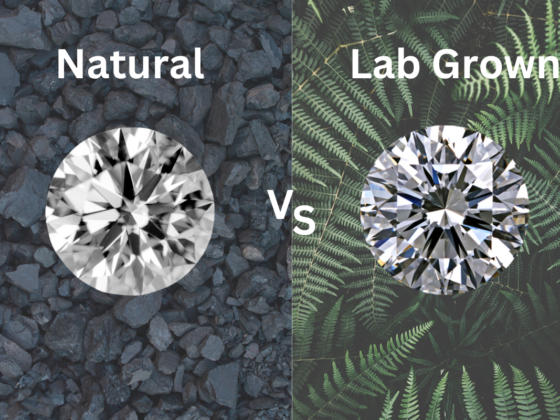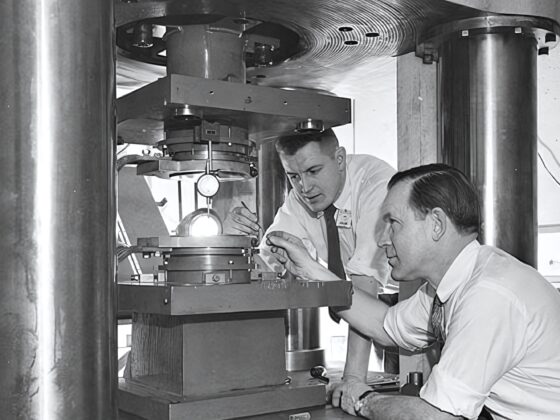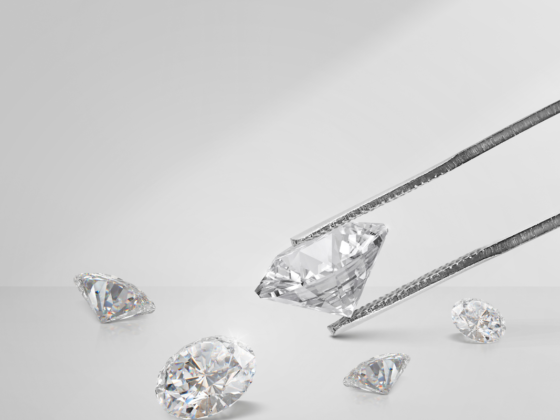Lab-grown diamonds are available in a wide variety of shapes and sizes, just like natural diamonds.
- The most popular shapes are round, oval, emerald, pear, and princess cuts.
- More unique shapes, such as marquise and Asscher cuts, are also gaining popularity.
- Lab-grown diamonds are measured in carats, just like natural diamonds.
- The size of a lab-grown diamond can vary depending on the shape and cut.
- When choosing a lab-grown diamond, it’s important to consider your budget, personal style, and the overall look you’re going for.
Introduction
In the world of fine jewelry, lab-grown diamonds have become popular options instead of natural diamonds. What makes these diamonds stand out is that they have the same physical, chemical, and visual qualities as natural ones. The only difference is where they come from: lab-grown diamonds are carefully made in controlled lab settings.
Understanding Lab-Created Diamonds
To truly understand lab-grown diamonds, you should first know what they are. They are not fake or substitutes like cubic zirconia or Moissanite. Lab-grown diamonds are “real” diamonds. They have the same brilliance, fire, and toughness as natural diamonds.
This amazing work of science happens through advanced technology. It mimics the natural conditions where diamonds form deep in the Earth’s mantle.
Definition and Creation Process
A lab-made diamond is a diamond made in a controlled lab instead of mined from the earth. This is done using advanced technology that copies how natural diamonds grow. Lab-grown diamonds look, act, and feel just like mined diamonds. They share the same shine, fire, and strength.
The process starts with a small diamond seed placed in a chamber of pure carbon. It uses one of two methods: HPHT (High Pressure/High Temperature) or CVD (Chemical Vapor Deposition). Under high pressure and high temperature, carbon atoms connect to the diamond seed, building it layer by layer. This continues for weeks until a rough diamond crystal forms. Then, it is carefully cut and polished for jewelry.
Advances in Technology Impacting Diamond Shapes and Sizes
Advancements in lab diamond technology have changed the variety of shapes and sizes these diamonds come in. At first, limits in technology made it hard to create different sizes and shapes, but that’s not the case now. With better technology, larger and higher-quality lab diamonds are easier to find, and they come in many beautiful cuts.
The ongoing improvements in these processes allow for lab diamonds to be made in different sizes. This includes small melee diamonds that highlight bigger stones and eye-catching center stones that attract attention.
Comprehensive Guide to Lab Grown Diamond Shapes
 Lab-grown diamonds, like natural diamonds, come in many shapes, each with a special charm. You can choose from the classic round brilliant cut to the sleek emerald cut. There are endless options. In the end, it all depends on what you like and the look you want to create.
Lab-grown diamonds, like natural diamonds, come in many shapes, each with a special charm. You can choose from the classic round brilliant cut to the sleek emerald cut. There are endless options. In the end, it all depends on what you like and the look you want to create.
Popular Shapes: From Round to Marquise
The round brilliant cut is the most popular shape for lab-created and natural diamonds. This cut is famous for its great brilliance and sparkle. It has 58 carefully angled facets that reflect light well, making it shine.
While the round brilliant is the favorite, other shapes have also become popular. The oval cut has a longer, elegant shape that can make the diamond seem bigger. If you like vintage styles, the cushion cut is a great choice. It has smooth, rounded corners that give a soft and romantic touch. The pear-shaped diamond, often called the teardrop, combines the shine of a round brilliant with the unique look of a marquise.
Here are some popular shapes for lab-grown diamonds:
- Round: The most popular shape, known for its brilliance and sparkle.
- Oval: An elongated shape that can make the diamond appear larger.
- Cushion: A classic shape with a soft, romantic feel.
- Pear: A unique and elegant shape that resembles a teardrop.
- Princess: A modern shape with pointed corners and a square or rectangular outline.
- Emerald: A sophisticated shape with a large, open table that highlights the diamond’s clarity.
Niche and Unique Shapes: Exploring Less Common Options
Beyond popular diamond shapes, there is a world of unique lab diamond styles. Each shape has its own charm and appeal. These choices allow people to stand out with their diamond jewelry. One example is the marquise cut. This shape is long with pointed ends. It gives a vintage feel and can make fingers look longer and slimmer.
Another interesting shape is the Asscher cut. It is square with cut corners, combining vintage and modern looks. For those wanting a truly unique engagement ring, shapes like the radiant cut, heart cut, or trillion cut are also great options.
Sizing Spectrum of Lab Grown Diamonds
 Lab-grown diamonds, like natural diamonds, come in many carat weights. This can affect how they look and their price. Choosing the right carat weight is a personal choice. It depends on what you like, your budget, and the style of the jewelry. Smaller carat diamonds are more affordable. They are great for adding detail or for lighter designs. Larger carat diamonds are bold. They make a strong statement and feel luxurious.
Lab-grown diamonds, like natural diamonds, come in many carat weights. This can affect how they look and their price. Choosing the right carat weight is a personal choice. It depends on what you like, your budget, and the style of the jewelry. Smaller carat diamonds are more affordable. They are great for adding detail or for lighter designs. Larger carat diamonds are bold. They make a strong statement and feel luxurious.
How Size is Measured in Lab Created Diamonds
Size matters when it comes to diamonds, including lab-grown diamonds. Just like natural diamonds, lab-grown diamonds are measured in carats. One carat is equal to 200 milligrams. The carat weight is a key factor that affects the price of a lab-grown diamond. As the carat weight goes up, the diamond becomes rarer and its price usually increases.
Remember, carat weight is only one part of what you need to think about when you look at a diamond. Other factors, like cut, color, and clarity, are also very important in deciding how beautiful and valuable a diamond is.
Comparing Sizes Across Different Shapes
While carat weight provides a standardized measurement of a diamond’s size, it’s important to note that different diamond shapes can appear larger or smaller than others, even at the same carat weight. This optical illusion stems from how light interacts with the facets of various shapes.
For example, an oval-shaped diamond or a marquise-shaped diamond tends to appear larger than a round brilliant diamond of the same carat weight because its elongated shape distributes weight over a larger surface area. Emerald-cut diamonds, pear-shaped diamonds, and heart-shaped diamonds also share this characteristic.
Consider this table as a general guide:
| Shape | Appearance at Same Carat Weight |
|---|---|
| Round | Baseline |
| Oval | Appears Larger |
| Cushion | Appears Slightly Smaller |
| Pear | Appears Larger |
| Princess | Appears Slightly Smaller |
| Emerald | Appears Larger |
| Marquise | Appears Larger |
| Asscher | Appears Slightly Smaller |
| Radiant | Appears Slightly Smaller |
| Heart | Appears Slightly Larger |
Conclusion
Lab-grown diamonds come in many shapes and sizes. You can choose from classic round shapes or unique marquise cuts. Thanks to new technology, there are even more options now to fit different styles. Knowing how these diamonds are made and sized is important when picking the right one. Lab-grown diamonds are both versatile and eco-friendly. You can explore the different shapes and sizes to find the perfect piece that shows your style and values.
FAQs
What are the most sought-after shapes for lab-grown diamonds in Australia?
Brilliant-cut lab-grown diamonds are very popular in Australia, especially for engagement rings. Their amazing sparkle and brilliance make them a classic and desired option to show love and commitment.
Are there size limitations for creating lab-grown diamonds?
New technology has made it much easier to grow lab-grown diamonds. The growth process uses high pressure and high temperature. This lets us create lab-grown diamonds in different carat weights.








